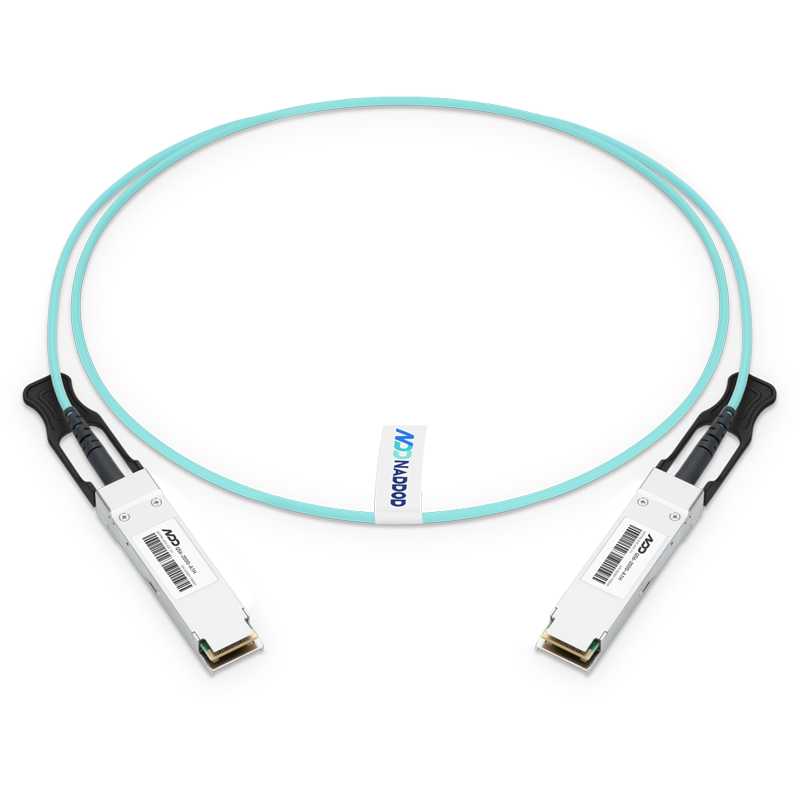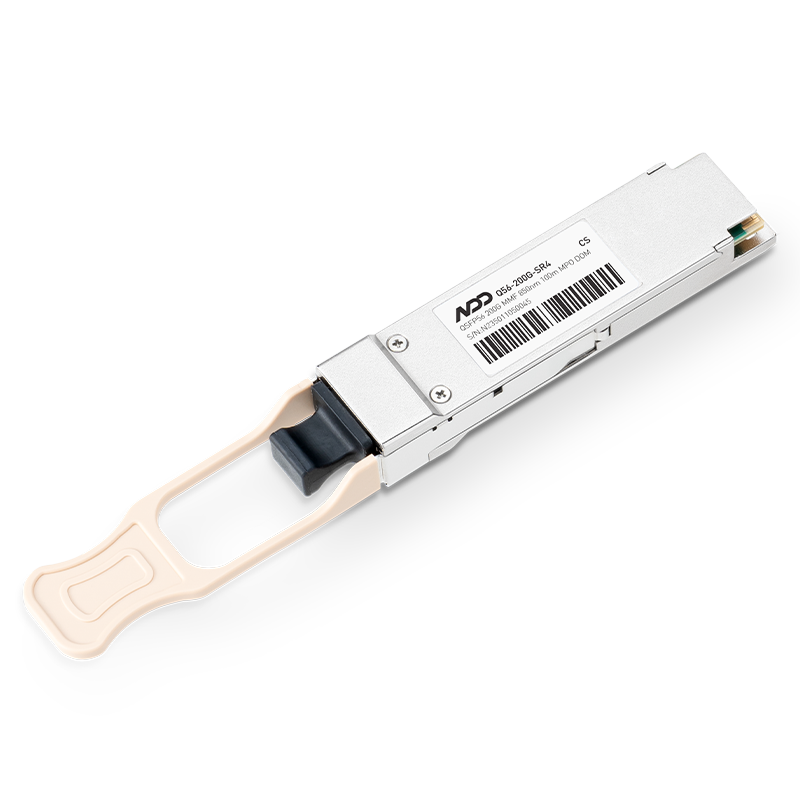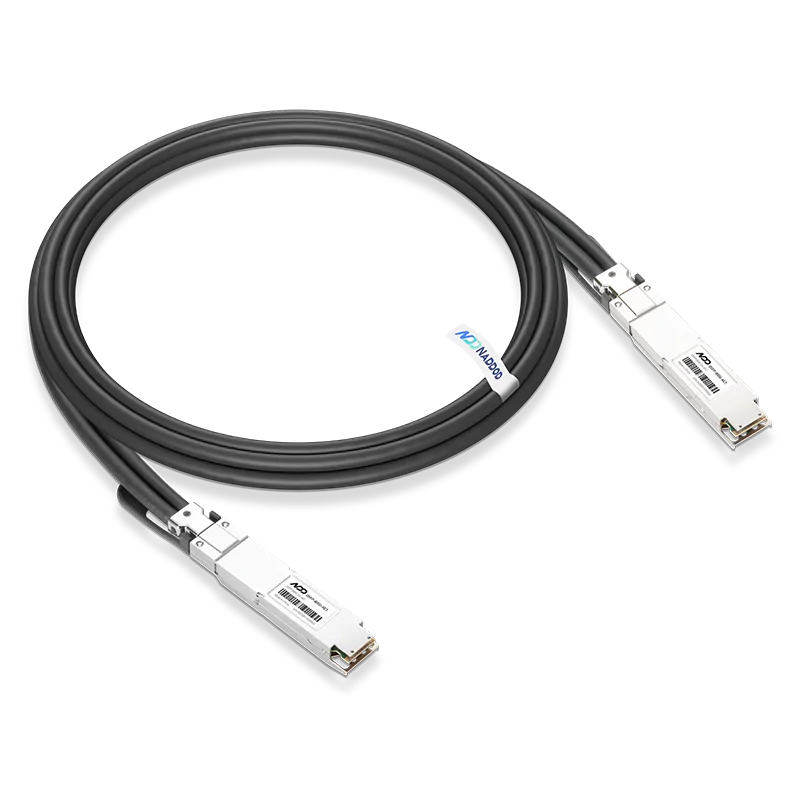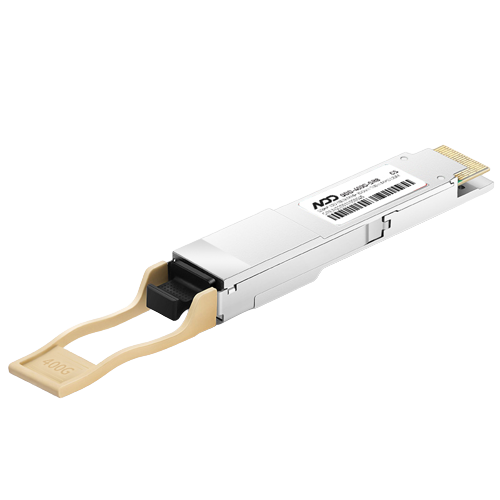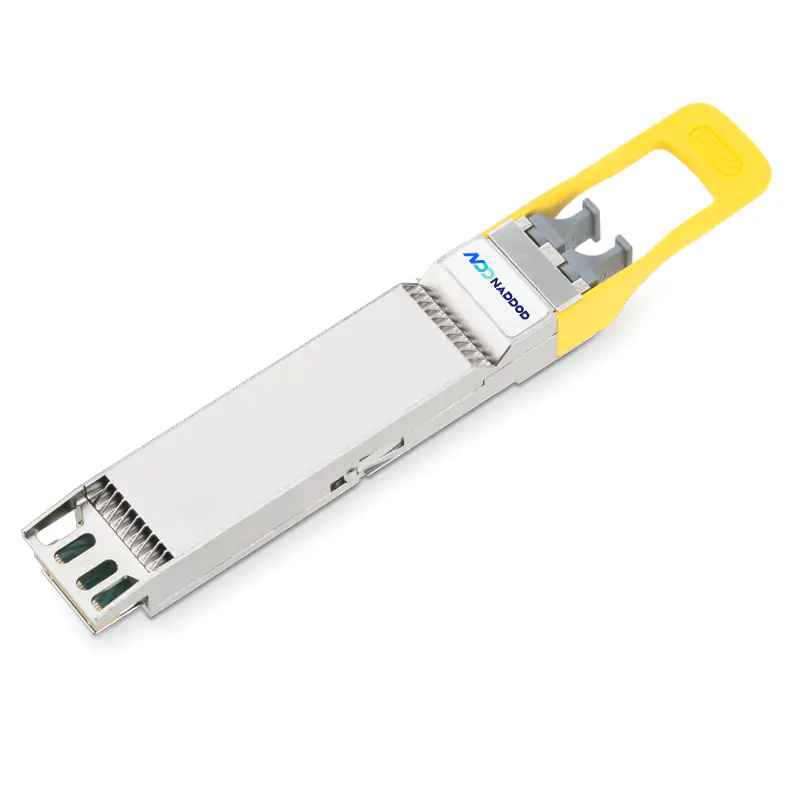With the rapid advancement of AI, HPC, and cloud computing, the demand for high-speed optical modules such as 400G, 800G, and even 1.6T is growing exponentially. This surge is driving technological upgrades in optical modules toward higher data rates.
NADDOD, the leading optical modules manufacturer, offers a comprehensive range of transceivers across all rates and form factors, including 200G, 400G, and 800G. By delivering cutting-edge networking solutions, NADDOD plays a crucial role in building robust HPC systems, next-generation data centers, and scalable cloud infrastructures.
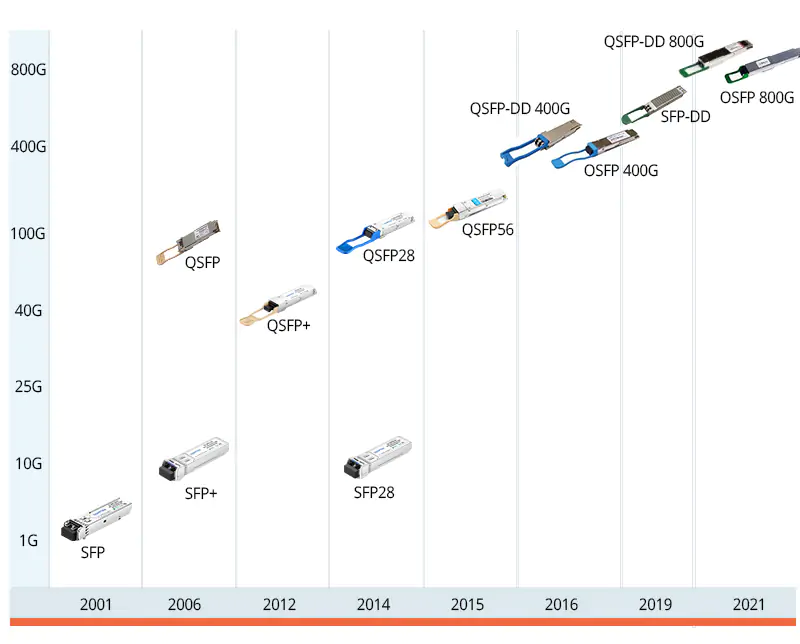
In this article, we will explore the evolution from 400G to 800G, and even 1.6T optical modules, examining the technological advancements and industry trends shaping their development.
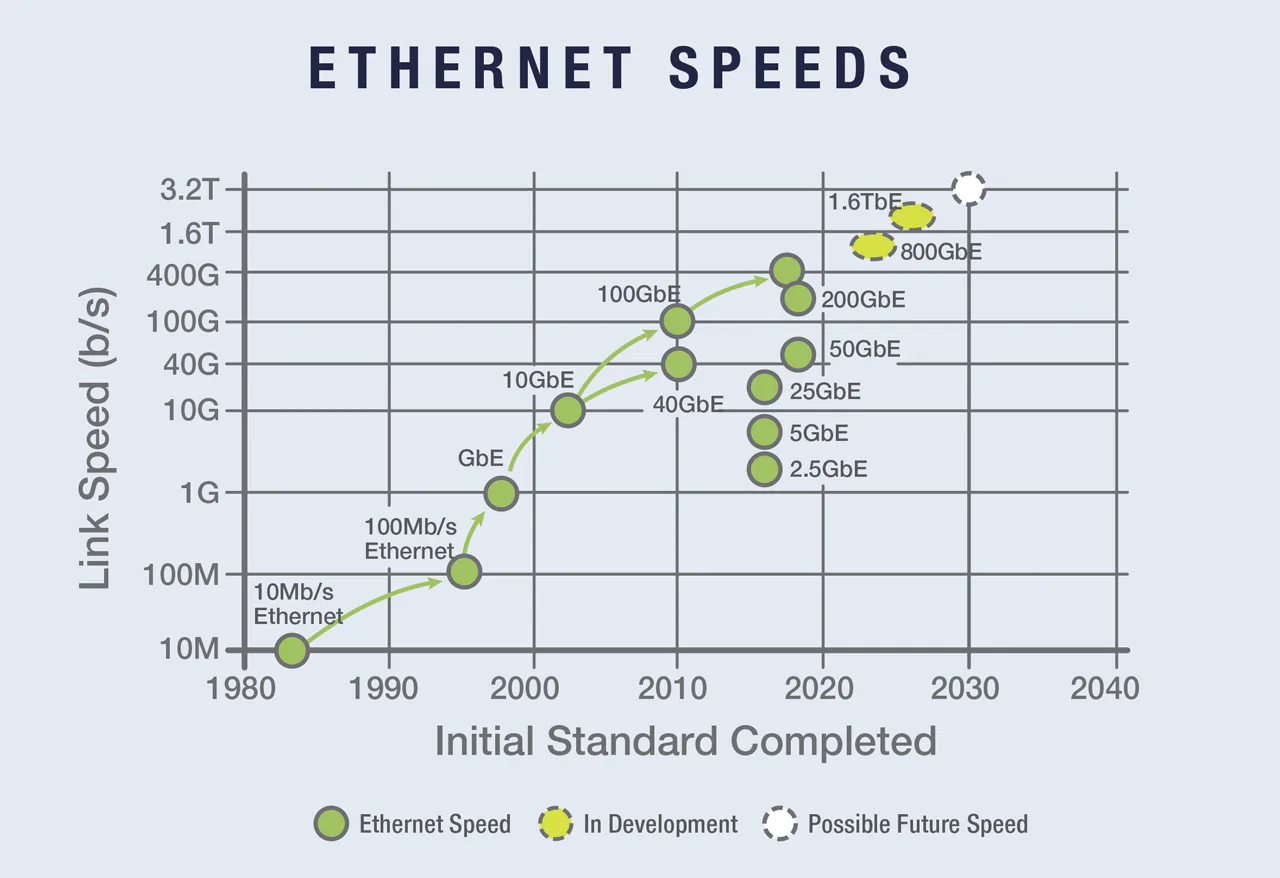
1. Changes in Packaging Methods
As optoelectronic devices develop and integration levels increase, the performance and transmission bandwidth of these devices improve. Consequently, the packaging methods of optical modules continue to evolve, aiming for higher transmission rates and smaller sizes. Different packaging forms can be selected for various rates and scenarios.
|
Speed Rates |
Representative Package Type |
|
SFP |
|
|
SFP+ / XFP |
|
|
25G |
SFP28 |
|
40G |
QSFP+ |
|
QSFP28 |
|
|
QSFP56 / QSFP-DD / OSFP |
|
|
400G |
QSFP-DD / OSFP / QSFP-112 |
|
QSFP-DD800 / OSFP |
Comparative Sizes of Different Packaging Methods:
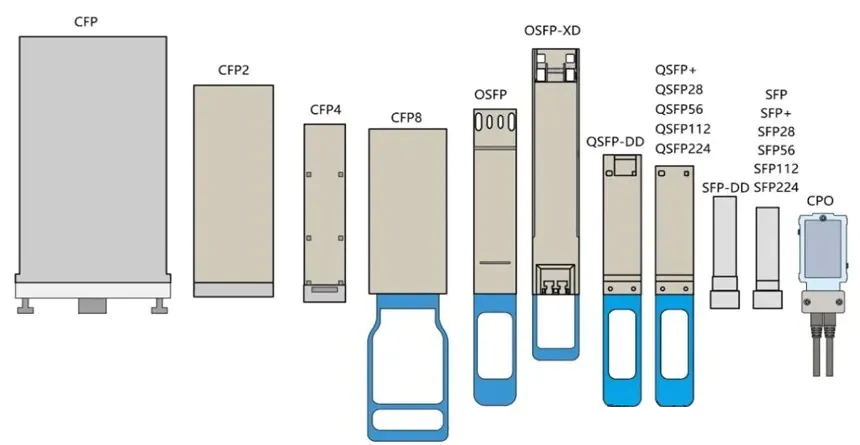
2. How to Improve the Speed of Optical Modules
There are three main approaches to enhancing the speed of optical modules:
Higher-Order Modulation Techniques: Evolving from NRZ (Non-Return-to-Zero) to PAM4 (Pulse Amplitude Modulation) to xQAM (Quadrature Amplitude Modulation).
Increasing the Speed of Optical Devices (Higher Baud Rates): Progressing from 25G to 50G to 100G to 200G.
Increasing the Number of Parallel Channels (More Lanes):
- Increasing the number of optical fiber pairs, such as SR4 with 4 pairs of multimode fibers transmitting 100G (25G per channel);
- Using Wavelength Division Multiplexing (WDM), such as LR4 with 1 pair of single-mode fibers transmitting 100G (25G per wavelength) or 40G BiDi transmitting 40G (bidirectional, 20G per wavelength).
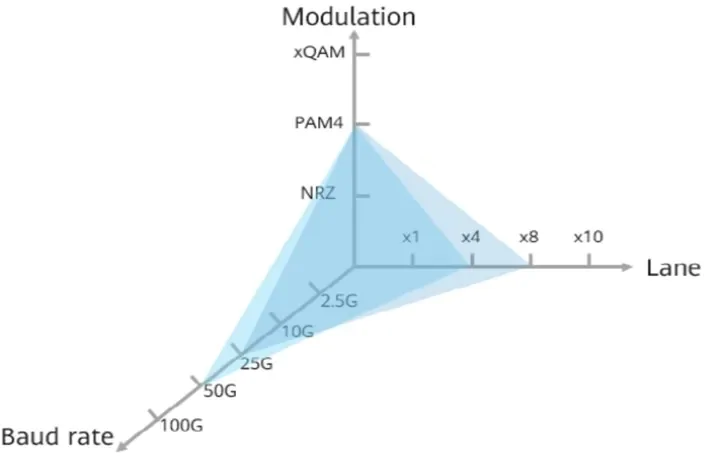
About the Number of Parallel Channels (More Lanes):
Common modules like SFP (Small Form-Factor Pluggable), SFP+, and SFP28 follow a single-channel speed enhancement route. Modules like QSFP (Quad Small Form-Factor Pluggable, with 4 channels), OSFP (Octal Small Form-Factor Pluggable, with 8 channels), and QSFP-DD (Quad Small Form-Factor Pluggable-Double Density, also 8 channels) follow a multi-channel technology route.
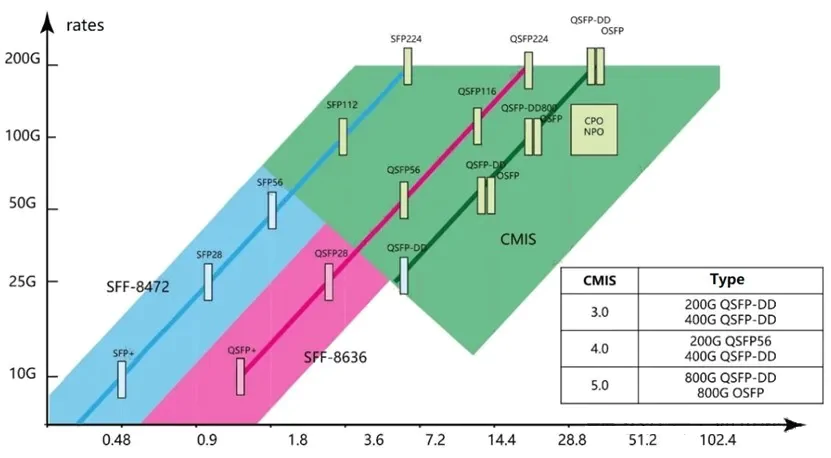
3. Distinguishing Optical Modules by Transmission Distance
|
Transmission Distance |
PMD Type |
|
KR |
Represents a transmission distance of 10 meters. "K" stands for backplane, indicating the signal transmission distance between backplanes. |
|
CR |
Represents a transmission distance of meters. "C" stands for copper, indicating a high-speed copper cable connection. (SDE will default to KR if AN is enabled) |
|
SR |
Represents a transmission distance of 10 meters. "S" stands for short, indicating short-distance transmission, generally using multimode fiber. |
|
DR |
Represents a transmission distance of 500 meters. |
|
FR |
Represents a transmission distance of 2 kilometers. |
|
LR |
Represents a transmission distance of 10 kilometers. "L" stands for long. |
|
ER |
Represents a transmission distance of 40 kilometers. "E" stands for extended. |
|
ZR |
Represents a transmission distance of 80 kilometers. |
4. Latest Optical Module Interfaces and Naming Defined by the Ethernet Alliance
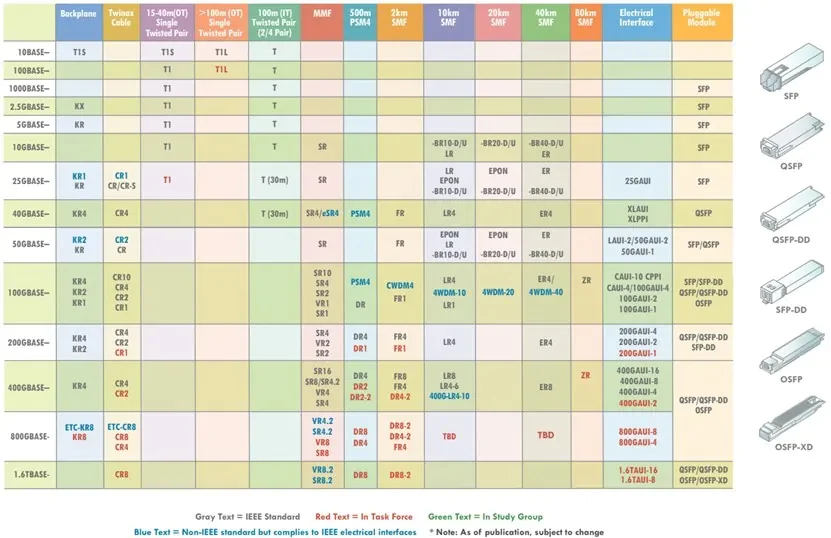
In data center scenarios, particular attention should be paid to the MMF (Multimode Fiber) optical module column. Due to the limited area in domestic data centers, multimode optical modules usually suffice for internal data center requirements.
5. Comparison of Some Typical Optical Module Implementations
|
Standard |
Connector |
Fiber Pairs |
Modulation |
Package |
Fiber Type |
Transmission Medium and Distance |
Standard Body |
|
100G-SR10 |
24-core MPO |
10 |
NRZ |
CFP |
Multimode |
Multimode (OM2) fiber: 30m (OM3) fiber: 100m (OM4) fiber: 150m |
IEEE 802.3 |
|
100G-SR4 |
8/12-core MPO |
4 |
NRZ |
QSFP28 |
Multimode |
Multimode (OM4) fiber: 100m |
IEEE 802.3 |
|
100G-PSM4 |
12-core MPO |
4 |
NRZ |
QSFP28 |
Single-mode |
Single-mode (G.652) fiber: 500m |
MSA |
|
100G-LR4 |
LC |
1 |
NRZ |
QSFP28 |
Single-mode |
Single-mode (G.652) fiber: 10km |
IEEE 802.3 |
|
400G-SR16 |
32-core MPO |
16 |
NRZ |
CDFP/CFP8 |
Multimode |
Multimode (OM3) fiber: 70m (OM4/OM5) fiber: 100m |
IEEE 802.3 |
|
400G-SR8 |
16-core MPO |
8 |
PAM4 |
QSFP-DD/OSFP |
Multimode |
Multimode (OM4/OM5) fiber: 70m |
IEEE 802.3 |
|
8/12-core MPO |
4 |
PAM4 |
QSFP-DD/OSFP |
Single-mode |
Single-mode (G.652) fiber: 500m |
IEEE 802.3 |
|
|
LC |
1 |
PAM4 |
QSFP-DD/OSFP |
Single-mode |
Single-mode (G.652) fiber: 10km |
IEEE 802.3 |
|
|
16-core MPO |
8 |
PAM4 |
QSFP-DD800/OSFP |
Single-mode |
Single-mode (G.652) fiber: 500m |
IEEE 802.3 |
|
|
800G-DR4 |
8/12-core MPO |
4 |
PAM4 |
QSFP-DD800/OSFP |
Single-mode |
Single-mode (G.652) fiber: 500m |
IEEE 802.3 |
|
800G-LR |
LC |
1 |
16-QAM |
QSFP-DD800/OSFP |
Single-mode |
Single-mode (G.652) fiber: 10km |
IEEE 802.3 |
6. Routes for Achieving Higher-Speed Optical Modules
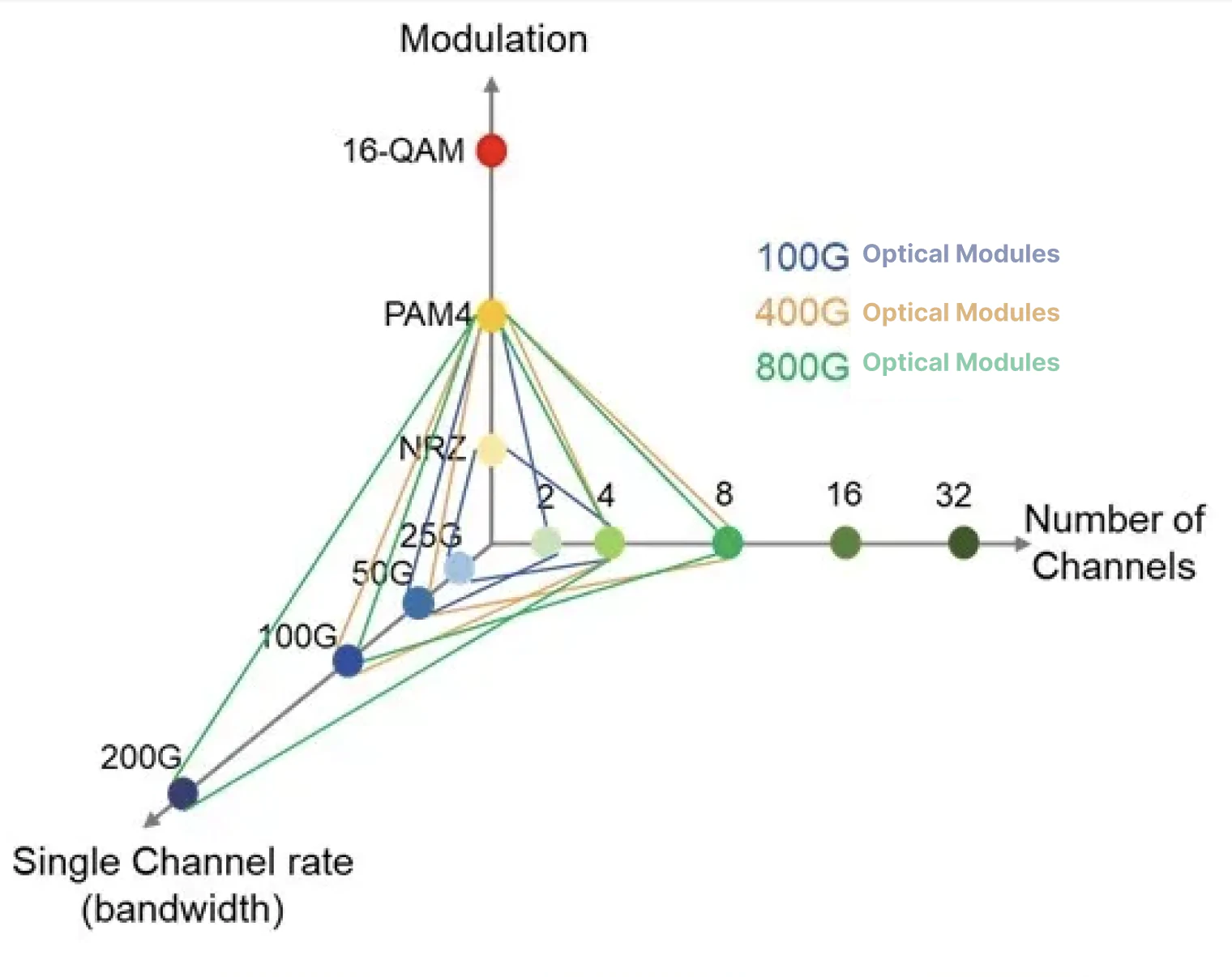
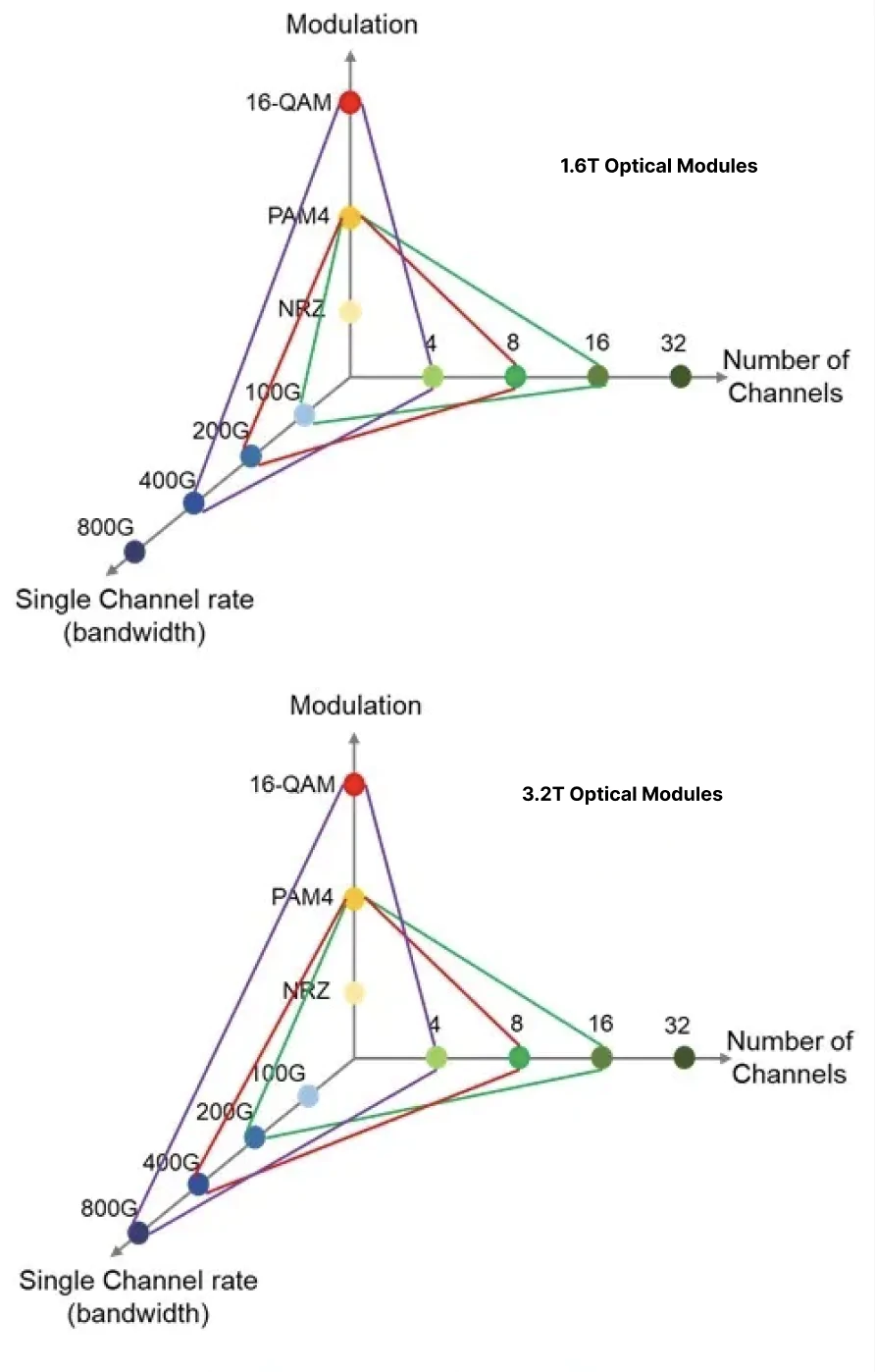
7. Conclusion
As the demand for faster and more efficient data transmission grows, the era of 400G, 800G, and 1.6T optical modules is fully upon us. NADDOD, a leading provider of advanced networking solutions, is at the forefront of this technological evolution, continually pushing the boundaries of what's possible in data transmission technology.
With the industry's shift toward higher data rates and enhanced connectivity, NADDOD is pioneering advancements that support the evolving needs of AI-driven applications, high-frequency trading, and large-scale scientific computations. Our optical modules ensure seamless, high-speed data transmission, effectively meeting the growing demands of modern digital landscapes.
We have large stock of popular 400G and 800G modules, ensuring fast delivery to meet urgent deployment needs. Additionally, all of NADDOD's optical connection products, including modules and fiber cables, undergo rigorous testing to ensure they perform reliably even under full load conditions. This rigorous testing guarantees that there are no link-down issues during operation.

Furthermore, NADDOD's products are compatible with multiple OEM codes from standard manufacturers like Cisco, ensuring stable operation across various platforms. This compatibility and reliability make NADDOD's solutions a trusted choice for building robust HPC systems, next-generation data centers, and scalable cloud infrastructures. Contact our expert to get the most cost-effective networking solutions!

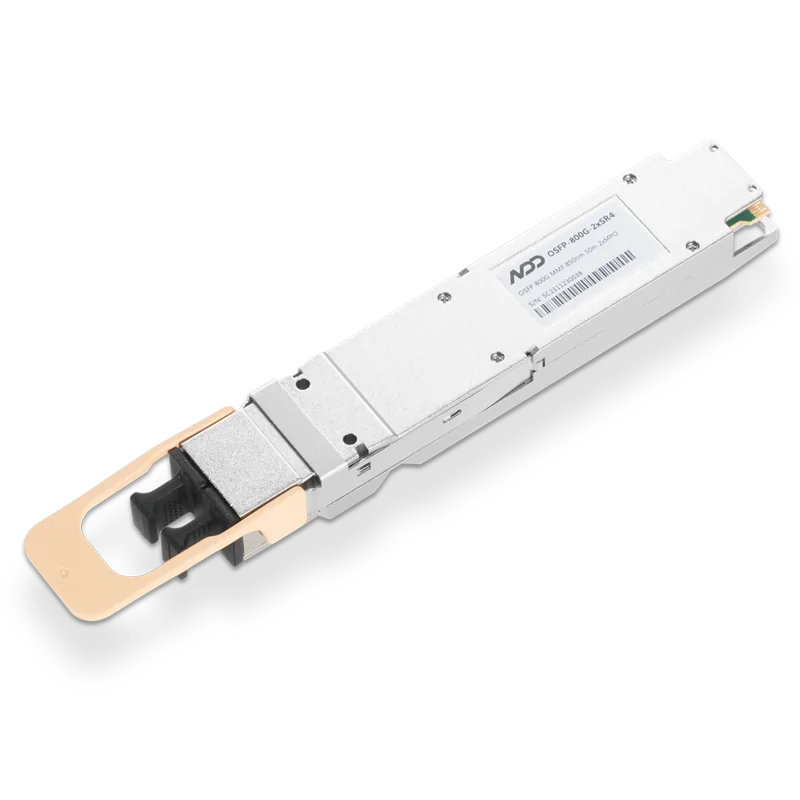 800GBASE-2xSR4 OSFP PAM4 850nm 50m MMF Module
800GBASE-2xSR4 OSFP PAM4 850nm 50m MMF Module- 1DAC's Growing Importance in High-Performance AI Networking
- 28 Tips on Choosing the Right Optical Transceiver
- 3The Evolution of AI Capabilities and the Power of 100,000 H100 Clusters
- 4NVIDIA GB300 Deep Dive: Performance Breakthroughs vs GB200, Liquid Cooling Innovations, and Copper Interconnect Advancements.
- 5Blackwell Ultra - Powering the AI Reasoning Revolution




